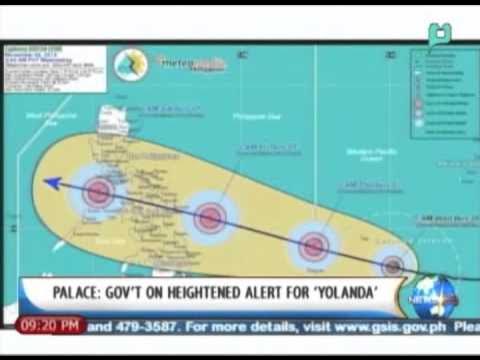ALIM | Epiko ng mga Ifugao | Matatag Curriculum
Summary
TLDRThe epic of the Ifugao people, set in the Central Cordillera of Northern Luzon, tells the tale of deities and heroes. The Ifugao live high in the mountains, rich in culture and strong in their ancient beliefs. Their mythology features gods and goddesses, rituals, and offerings to appease the divine. The story revolves around two siblings, Wigan and Bugan, who survive a great flood. They marry and have children, but a unique child, Igon, brings a prophecy of separation and war among tribes. The narrative explores the Ifugao's daily life, their agricultural practices, and the significance of their traditions in shaping their history.
Takeaways
- 🌄 The 'Alim ng mga Ipuwaw' is an epic tale about the deities and events in the Cordillera region of Northern Luzon.
- 🌾 The Igorots, indigenous people of the region, are deeply rooted in their culture and religious beliefs, which are reflected in their myths.
- 🌲 The Igorots' mythology includes gods and goddesses associated with their ancestors and natural forces, with rituals performed to appease them.
- 🏞️ The story is set in a time when the land was bountiful, and people lived peacefully until they angered the gods, leading to a great flood.
- 👫 Two siblings, Wigan and Bugan, survived the flood, symbolizing the beginning of humanity's rebirth after the disaster.
- 💑 Wigan and Bugan were instructed by the gods to marry and repopulate the world, as they were the only humans left.
- 👶 They had seven children, but their youngest, Igon, was unique and was eventually sacrificed in a ritual to the gods.
- 🔥 The sacrifice of Igon was a pivotal moment in the story, leading to a divine revelation and the siblings' separation.
- 🗡️ The separation of Wigan and Bugan led to the formation of tribes and the beginning of tribal wars in the mountains, a result of the gods' prophecy.
- ⏳ The story serves as a reminder of the cyclical nature of life, the importance of cultural traditions, and the consequences of human actions on the divine realm.
Q & A
What is the 'Alim ng mga Ipuwaw'?
-The 'Alim ng mga Ipuwaw' is an epic story about the gods and events believed to have occurred in the heavens, featuring the Ifugao people who reside in the mountainous regions of the Cordillera in Northern Luzon.
What is the significance of the Ifugao people's culture and beliefs?
-The Ifugao people are known for their rich culture and strong religious beliefs, which are deeply rooted in their mythology and rituals. They have a connection with nature and ancestral spirits, which are reflected in their daily lives and agricultural practices.
What are the key elements of the Ifugao mythology mentioned in the script?
-The key elements of Ifugao mythology include gods and goddesses, ancestors, and natural forces. These are often associated with rituals involving animal sacrifices, offerings of food and drink, and other practices to appease the gods.
Who are Wigan and Bugan, and what is their role in the epic?
-Wigan and Bugan are the male and female protagonists of the epic, respectively. They are siblings who survived a great flood that wiped out all other living beings. Their story is central to the Ifugao creation narrative.
What happened to the world according to the Ifugao epic?
-In the Ifugao epic, the world was once abundant and peaceful until humans angered the gods with their sins. This led to a great flood that submerged the entire world, with only Wigan and Bugan surviving on separate mountains.
How did Wigan and Bugan meet in the story?
-Wigan and Bugan met after the flood when Bugan, carrying a live ember in her bamboo tube, was discovered by Wigan. They decided to become companions after understanding each other's plight, as they were the only humans left in the world.
What is the significance of the nine children of Wigan and Bugan?
-The nine children of Wigan and Bugan represent the different tribes and divisions of people that emerged after the flood. They are significant because they symbolize the repopulation of the world and the beginning of various lineages.
Why did Wigan and Bugan decide to sacrifice their youngest child, Igon?
-Wigan and Bugan decided to sacrifice their youngest child, Igon, as part of a ritual to appease the gods during a time of unexpected and unwanted rain. They hoped that the sacrifice would bring an end to the rain and ensure the well-being of their people.
What was the outcome of the sacrifice of Igon?
-After Igon was sacrificed and burned, the god Makanan appeared and declared that the siblings should separate, with Wigan going to the east and Bugan to the west. This marked the beginning of the tribal wars in the mountains, as the siblings were destined to fight and kill each other upon meeting.
What is the moral or lesson of the Ifugao epic?
-The Ifugao epic conveys the importance of understanding the consequences of one's actions, the significance of respecting nature and the gods, and the inevitable conflicts that can arise from misunderstandings and the struggle for power.
Outlines

このセクションは有料ユーザー限定です。 アクセスするには、アップグレードをお願いします。
今すぐアップグレードMindmap

このセクションは有料ユーザー限定です。 アクセスするには、アップグレードをお願いします。
今すぐアップグレードKeywords

このセクションは有料ユーザー限定です。 アクセスするには、アップグレードをお願いします。
今すぐアップグレードHighlights

このセクションは有料ユーザー限定です。 アクセスするには、アップグレードをお願いします。
今すぐアップグレードTranscripts

このセクションは有料ユーザー限定です。 アクセスするには、アップグレードをお願いします。
今すぐアップグレード関連動画をさらに表示

KASAYSAYAN NG CORDILLERA ADMINISTRATIVE REGION (CAR), LUZON

Panimulang ihip ng Amihan, unti-unti nang nagpaparamdam | 24 Oras

24 Oras: PAGASA: Bagyong Ompong, magtatagal sa loob ng PAR hanggang Biyernes

Storm trough, ‘habagat’ to bring rains across parts of the Philippines

Hanging Habagat, palalakasin ng 3 bagyo sa loob at labas ng PAR - Weather update... | 24 Oras

[NewsLife] Palace: Gov't on heightened alert for Yolanda || November 6, 2013
5.0 / 5 (0 votes)
